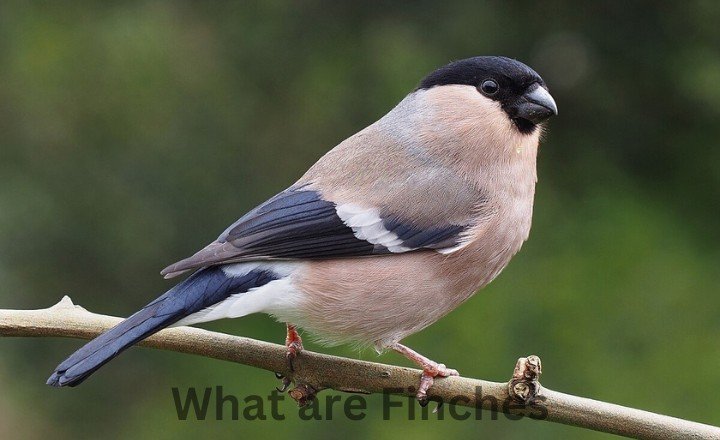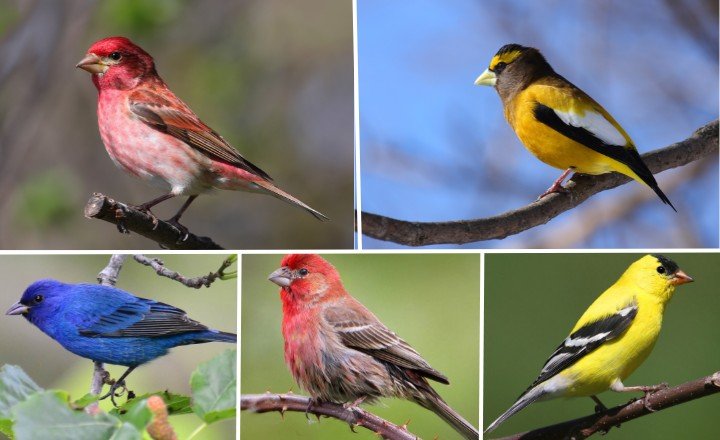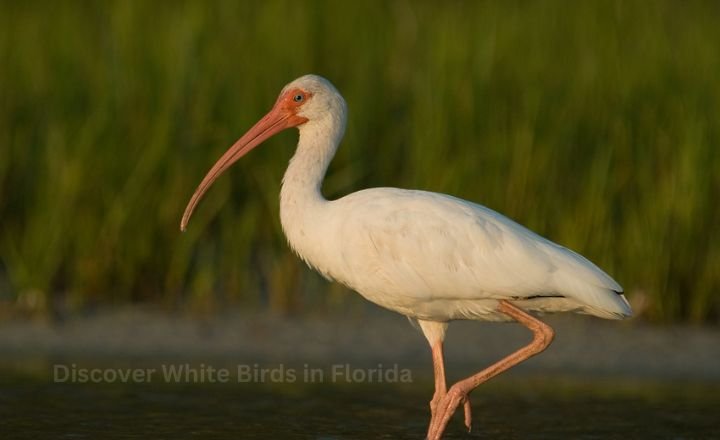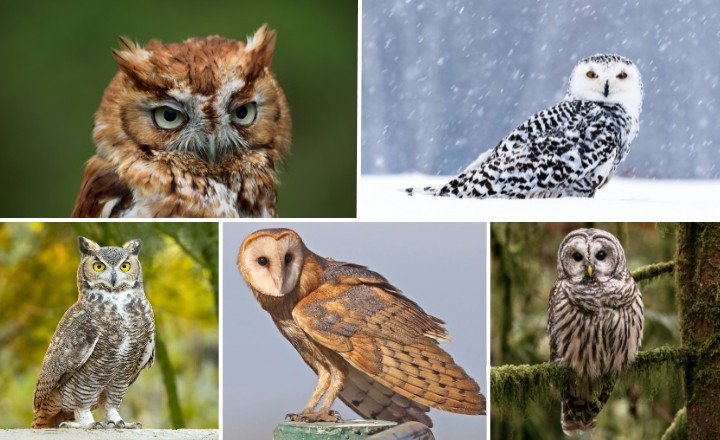5 Types of Finches in Michigan (With Pictures)
There’s an undeniable thrill in spotting the vibrant flurry of wings that flit across Michigan’s diverse landscapes. From bustling urban parks to serene rural settings, finches have carved out their niche in this beautiful state, captivating both seasoned birders and curious nature lovers alike. As a birdwatching enthusiast, it made me think what is it about these small yet striking birds that draw us into their world?
In this article, I’ll take you on a journey through Michigan’s varied habitats to explore the fascinating types of finches that grace our skies. Whether you’re a novice just beginning to identify these feathered friends or an experienced observer looking to expand your knowledge, there’s something magical about witnessing these social creatures as they flit from branch to branch.
What are Finches?
Before discussing the various kinds of them, we will try to know some of the background of these stunning creatures!
Finches are a diverse family of small songbirds known for their vibrant plumage and melodic calls. With over 200 species spanning the globe. The finches are quite the same size as Little Green Birds and Small Birds such as sparrows. These birds exhibit remarkable adaptations to their environments. Some finches, like the well-known goldfinch, boast bright yellow feathers in spring and summer, while others, such as the House Finch found in urban areas, have more muted tones that aid in camouflage.

Each species has evolved distinct beak shapes tailored to their specialized diets from seed-cracking capabilities seen in Darwin’s finches of the Galápagos Islands to nectar-sipping adaptations in tropical regions.
What sets finches apart is not just their physical traits but also their varied social behaviors. Some finch species are known for forming complex social structures with intricate courtship rituals, engaging in elaborate displays that captivate observers. This behavior not only enhances mate selection but also strengthens community bonds among flocks during breeding seasons.
Types of Finches in Michigan
Michigan is home to a diverse array of finch species, each bringing its unique charm and behavioral nuances. One of the most commonly spotted is the American goldfinch, famous for its vibrant yellow plumage, especially during the breeding season. These birds are not just visually striking but they have a delightful, melodic song that adds character to summer mornings. Nesting in shrubs and trees, they primarily feast on seeds from various plants, particularly sunflowers and dandelions.

American Goldfinch
Its vibrant splash of yellow against the greens of summer is not just notable for its striking plumage but also its unique life cycle. Unlike many songbirds, these finches breed later in the season, timed perfectly to coincide with the ripening of seeds in their environment. This strategy ensures that fledglings have an abundant food supply to thrive on during their critical early days, highlighting their remarkable adaptation to seasonal changes.

The American Goldfinch is the same as the size of any Brown Bird. Their diet predominantly consists of seeds from various plants sunflowers being a favorite but their feeding habits go beyond mere sustenance they play an essential role in seed dispersal. By consuming and then excreting seeds, American Goldfinches help propagate various plant species through their habitats.
“The goldfinch comes with the August yellow as if he was part of the ripening thistle bloom.” – Naturalist John Burroughs
Purple Finch
The Purple Finch, with its striking raspberry-red plumage in males and subtle brown-streaked appearance in females, is often mistaken for the House Finch. But what sets the Purple Finch apart is not just its vibrant coloration but also its unique vocalizations that resonate through coniferous forests across North America. Their cheerful, warbling song has a melodic quality that captures attention, making them a delightful companion to any birdwatcher’s experience.

These finches are not solitary birds just like the Red Birds. They thrive in social settings and often form small flocks, particularly during migration seasons. An interesting aspect of their behavior is their adaptability to diverse habitats from suburban gardens to dense woodlands which allows them to tap into various food sources. While they primarily feast on seeds and fruits, they’ve been known to indulge in flower buds as well.
“The Purple Finch’s song is a delightful melody that can be heard echoing through the forest. It is a series of rich warbles and trills that is sure to captivate any birdwatching enthusiast.” – Local Bird Watcher.
House Finch
The House Finch, often overlooked amidst the vibrant avian tapestry of our backyards, boasts a fascinating adaptability that makes it a remarkable survivor. These birds are native to the western United States, this small bird has successfully expanded its range across much of North America, owing to its unique relationship with humans.
Unlike many other species that shy away from urban environments, House Finches thrive in city landscapes, finding nourishment in ornamental shrubs and bird feeders. This ability not only highlights their resourcefulness but also their keen awareness of human habits.

The male House Finch showcases an array of colors that can vary dramatically depending on their diet and regional conditions. While typically adorned in shades of red or orange during breeding season thanks to carotenoid pigments from their food their hues can shift into more muted tones when resources are scarce or as they transition into non-breeding periods.
“House Finches are social birds and often gather in flocks, so creating a welcoming space with ample food and resources can attract not just a single finch, but an entire group to your backyard.” – Bird Watcher.
Evening Grosbeak
The Evening Grosbeak, with its bold yellow and black plumage, is a delightful sight for birdwatchers and nature enthusiasts alike. These birds are primarily found in the mountainous regions of North America, where they flock to feeders during winter months, displaying a charismatic yet somewhat elusive behavior.

What’s particularly fascinating about this bird is its impressive beak robust and conical that not only aids in cracking open tough seeds but also signifies their role as important seed dispersers within their ecosystem. Recent studies have highlighted the significant impact of habitat change on Evening Grosbeaks. As forests are altered by logging or urban development, these birds may struggle to find suitable nesting sites and food sources.
“The Evening Grosbeak is one of those birds that leave the observer with a sense of wonder.” – American Ornithologist Roger Tory Peterson
Indigo Bunting
The Indigo Bunting, with its vibrant blue plumage and melodious song, is more than just a feast for the eyes it symbolizes the grace of migration. This small songbird undertakes incredible journeys between breeding grounds in North America and wintering habitats in Central America.
This bird possesses a unique navigation skill that relies on celestial cues using the position of stars to guide their nocturnal flights. This innate ability allows them to cover vast distances while deftly avoiding obstacles along their migratory paths.

In addition to their stunning hues and navigational prowess, they hold an intriguing place in ecological communities. Their diet primarily consists of seeds and insects, playing a crucial role in seed dispersal and controlling insect populations.
“The Indigo Bunting is a true gem in the birding world. Its vibrant blue coloring is simply breathtaking.” – Local Birder.
Wrapping Up ‘Types of Finches in Michigan’
From the vibrant American Goldfinch to the striking Pine Siskin, these birds showcase a variety of colors and behaviors that delight both novice birdwatchers and seasoned ornithologists alike. Understanding the unique characteristics and habitats of each finch can enhance our appreciation for these remarkable creatures and their roles in local ecosystems. As you explore Michigan’s parks and natural areas, keep an eye out for these fascinating birds and consider participating in citizen science projects to help track their populations.
FAQs
What is the Most Common Type of Finch?
House finch is the most common among all. They are more often seen in parks backyards, farms, and urban centres across the continent. Their native habitat is the grasslands, deserts, and open woods.
How Do I Identify a Finch?
Most of the finches have flat heads and large beaks, with about 3 inches of wingspan and a length of around five and a half inches. Male finches have colorful plumage while the females are brown or gray.
What Do Finches Eat?
These birds eat seeds often, they can eat plant seeds or even grass on some occasions. At certain times, they also eat insects, berries, and even certain fruits.
What is the Lifespan of a Finch?
These birds can live up to between 15 and 20 years but their more common lifespan could be 10 years. In captivity, they would of course live longer but in wildlife, they have to face problems and thus their lifespan is shorter.







